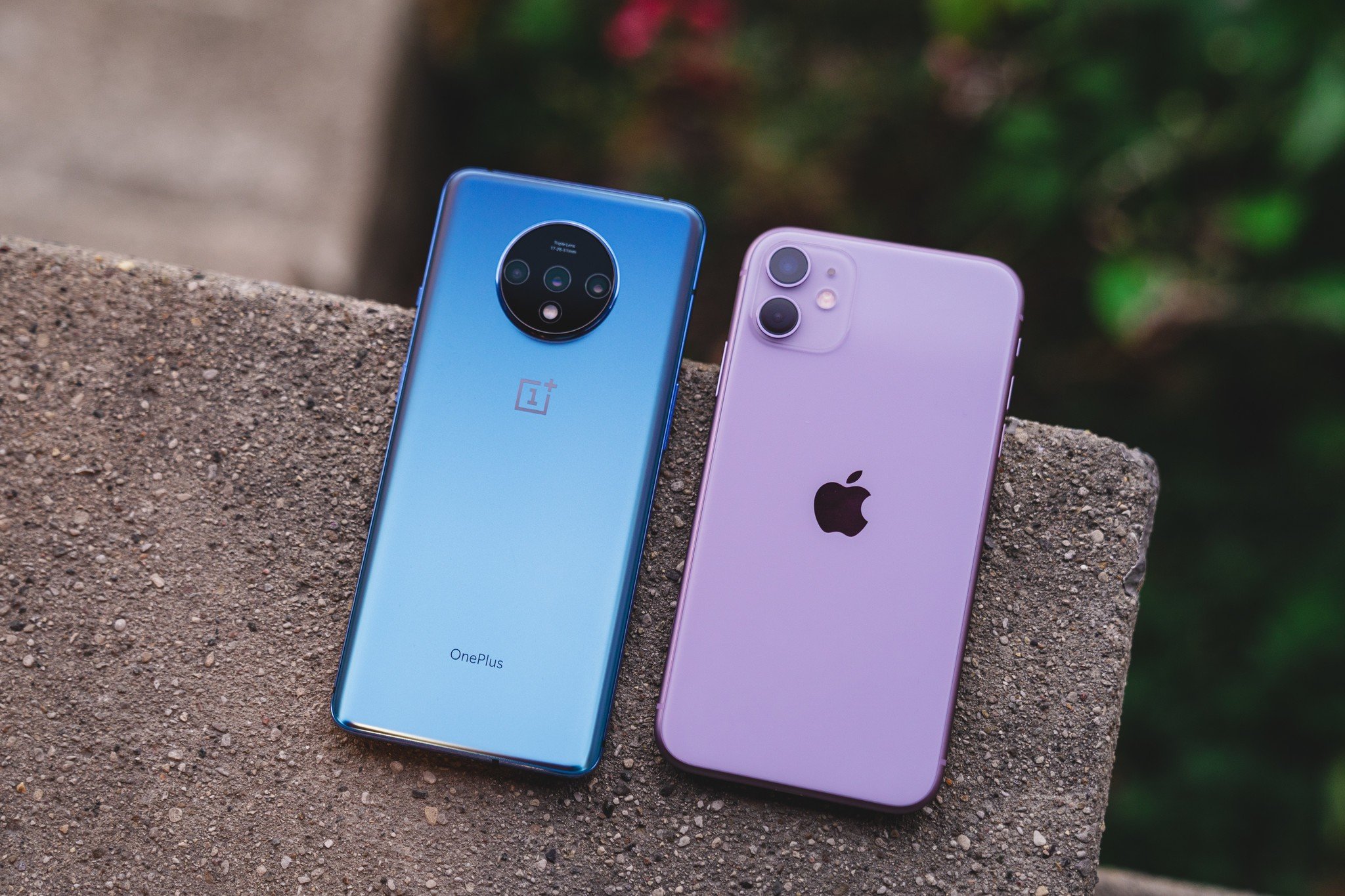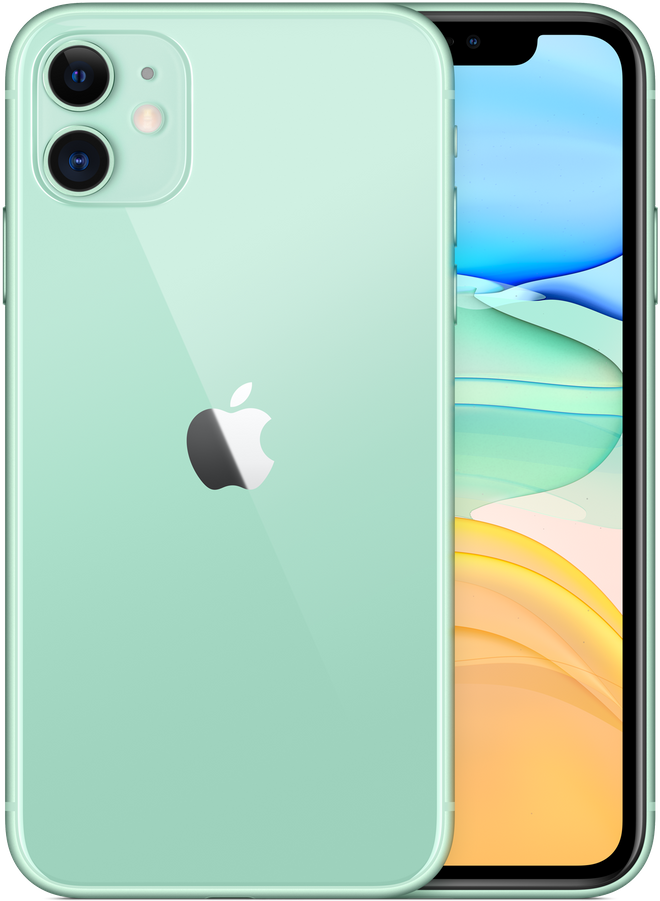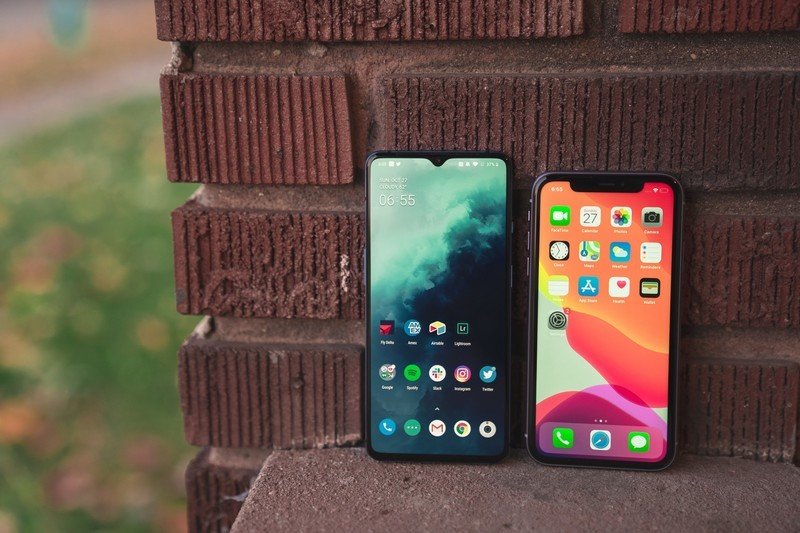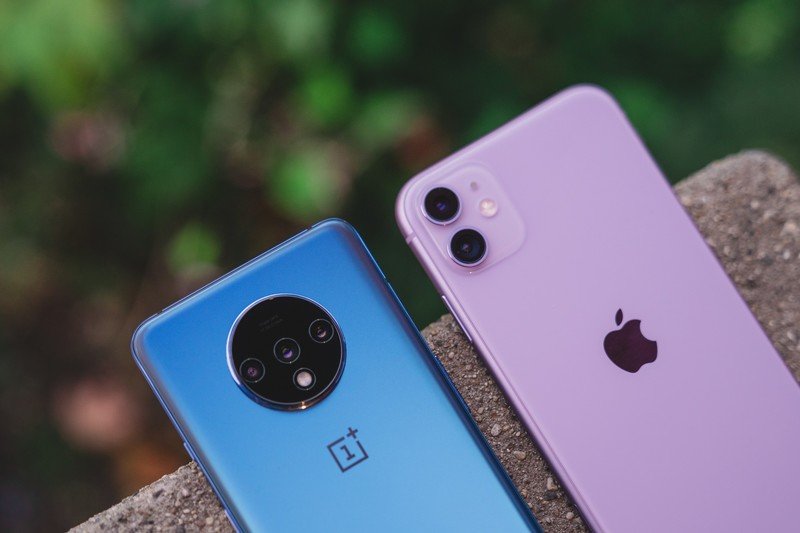OnePlus 7T vs. iPhone 11: Which should you buy?

OnePlus 7T

The OnePlus 7T is one of the best deals on a flagship-tier phone. OxygenOS on top of Android 10 is incredibly customizable, and the system flies with a smooth 90Hz display. The cameras aren't quite as good as the iPhone's, but this is one of the best Android experiences around.
OnePlus 7T
Affordable flagship
iPhone 11

The iPhone 11 is the cheapest of Apple's 2019 lineup, but it's packing the same top-of-the-line processor and incredible cameras as its pricier Pro models. Of course, with iOS comes access to Apple's ecosystem of services like iMessage and Airdrop, and the iPhone 11 has some of the best battery life around.
iPhone 11
Colorful and powerful
The OnePlus 7T and iPhone 11 are two of the best deals in their respective platforms; each phone offers blazingly fast performance, great cameras, and all-day battery life, all for hundreds less than other, similar flagship phones. Both phones offer relatively complete experiences that almost anyone would be happy with, but each cuts corners in different ways to reach its lower price point. So which phone is right for you? There's a lot more to it than just Android vs. iOS.
Cutting costs in different ways

If you get the chance to pick up both phones, the first thing you'll notice about each of them is how well they're built. Both OnePlus and Apple take similar approaches to design with glass and aluminum constructions, though each comes with its own distinct aesthetic. The OnePlus 7T has a matte finish, frosted glass backing with a large, circular camera housing in the middle for the triple camera system. The iPhone 11, by almost direct contrast, has a glossy backing that's available in five colors and holds a matte square camera module for the wide and ultrawide sensors.
The OnePlus 7T has an extra camera over the iPhone, but Apple offers better imaging and video performance.
Both phones are on the large side, but the OnePlus 7T has a considerably bigger footprint due to its massive 6.55-inch AMOLED display, versus the iPhone 11's 6.1-inch LCD panel. The iPhone's display has better viewing angles and fantastic color callibration, but at just above 720p, it's softer than the Full HD+ display on the 7T. The OnePlus 7T's 90Hz refresh rate just makes everything feel incredibly smooth and fluid.
The iPhone 11 also has a much larger notch at the top of its display, which houses the technology used for Apple's excellent Face ID authentication. Meanwhile, the OnePlus 7T has a simpler camera-based face unlock, along with an incredibly fast in-display fingerprint sensor.

Where you'll start to notice some bigger differences is in what each phone sacrifices to reach a lower price point. The OnePlus 7T lacks wireless charging and IP-certified water resistance of any kind, both of which the iPhone 11 has, but only the 7T features a triple camera array consisting of wide, ultrawide, and telephoto sensors. Unlike the pricier Pro models, the iPhone 11 foregoes the telephoto lens and offers dual cameras instead. While quality is subjective, I tend to find the iPhone generally takes higher quality photos than the 7T, offering superior dynamic range and much better video performance, but OnePlus's camera software is more flexible and features manual controls.
Get the latest news from Android Central, your trusted companion in the world of Android
You likely already know what software platform you prefer, but both the iPhone 11 and OnePlus 7T run the latest versions of iOS and Android, respectively. If you use other Apple products like an iPad or MacBook, you'll enjoy the tight integration of IOS 13, with features like iMessage, Airdrop, and Handoff. On the other hand, many Android users don't love the limited customizability of iOS — and OxygenOS on the OnePlus 7T is about as customizable as it gets. With it, you can change everything from fonts to icons, accent colors, and even gestures.
While the 7T lacks wireless charging, in exchange you get 30W Warp Charging, allowing you to reach 70% from a dead battery in just half an hour with the proper charger. The iPhone 11 hits a lower but still impressive 50% in the same amount of time with 18W charging, though it provides longer battery life, despite a smaller 3,110mAh battery compared to the 7T's 3,800mAh cell. There's also the issue of storage; neither phone has microSD expandability, but the OnePlus 7T comes in a single configuration of 128GB. The iPhone 11 starts with half the storage at 64GB, though you can upsize to 128 or 256GB.
If software preference makes no difference to you, the OnePlus 7T and iPhone 11 go toe to toe in a lot of ways. The iPhone 11 has better battery life, better (albeit fewer) cameras, and hardware bonuses like wireless charging and water resistance. However, the OnePlus 7T comes in at $100 cheaper with double the storage, a larger, sharper display with a higher refresh rate, faster wired charging, and a 2X telephoto camera. The good news? Both phones are outstanding values, and you'll likely be happy with either one.

Hayato was a product reviewer and video editor for Android Central.
